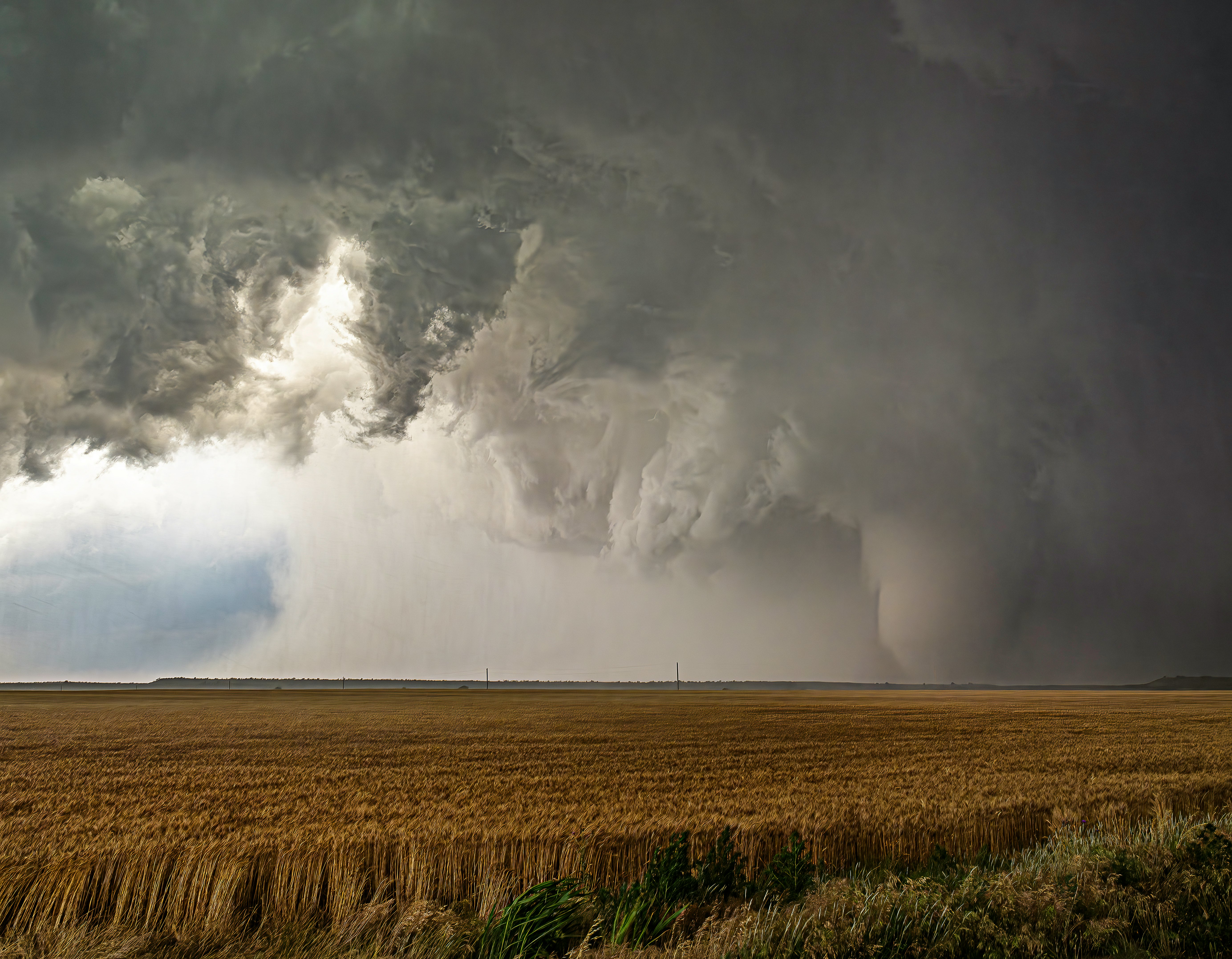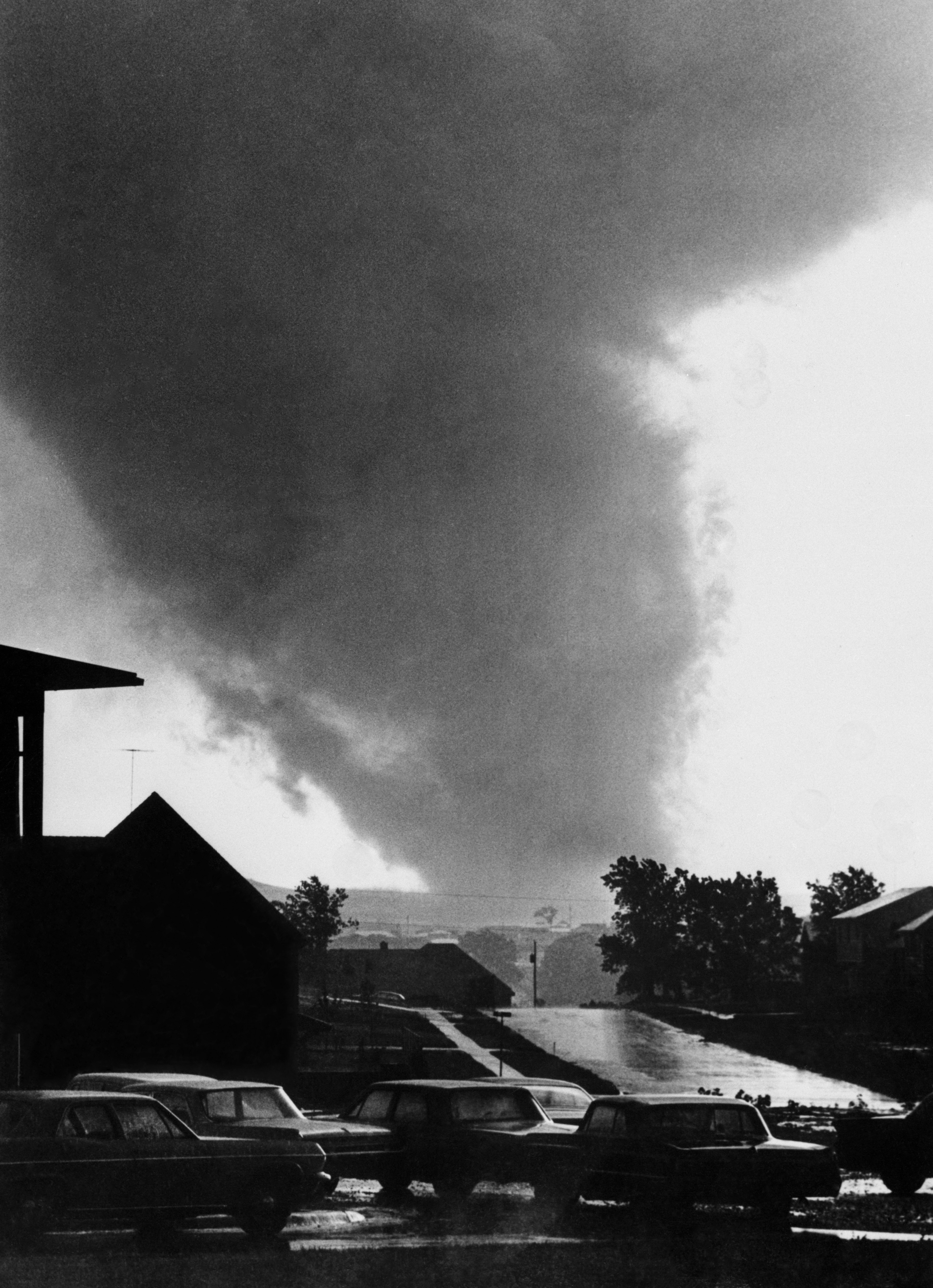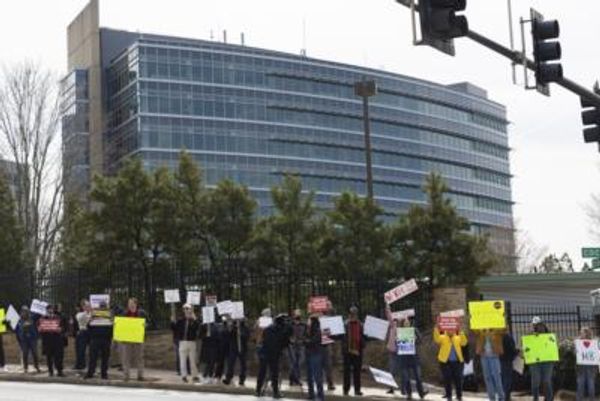
It’s a fun afternoon thrill ride to watch tornadoes chew up the scenery in a movie like Twisters, but afterwards, we all want to stumble out into the sunshine, safe in the belief that natural disasters only happen on the big screen — or, at worst, to somebody else, somewhere else.
Take Topeka, Kansas. Local legend had long claimed that Burnett’s Mount, a low hill southwest of downtown acted as a bulwark during a tornado, protecting the city from any destructive blows. But in June of 1966, a powerful EF-5 tornado touched down atop Burnett’s mound and quickly ripped through downtown Topeka, leaving 18 dead and a swath of destruction in its wake.
“Topeka won’t ever come back with another Burnett’s Mound story, because that tornado is sufficiently part of its cultural memory,” Harold Brooks, a meteorologist at the National Severe Storms Laboratory, tells Inverse.
A surprising number of myths and local legends about what protects, prevents, and causes tornadoes still exist across the United States. Some towns find a sense of safety in the lee of a hill or mountain, or in the curve of a river bend. Other people are sure that tornadoes avoid the dense centers of big cities, or the sites of apocryphal Indigenous legends. Here are three myths about tornadoes that just won’t end.

Myth: A tornado won’t cross a bend in a river; it also won’t strike near the junction of two rivers
Many people believe that tornadoes fizzle out the moment they pass over water, or significantly weaken when they reach a bend in a river or the point where two rivers meet. But this is far from the truth. Water simply doesn’t deter tornadoes. In fact, tornadoes can not only cross rivers, they can form over lakes or rivers and move onto land. For example, a 2011 tornado touched down over Lake Huron before it swept into Goderich, Ontario and killed one person and injured 37 more.
“We’ve seen tornadoes cross so many bodies of water,” says Brooks. “On April 3, 1974, there was a violent tornado that crossed the Ohio River twice. The most damaging tornado in U.S. history, which hit St. Louis, Missouri in 1896, crossed the Mississippi River basically where the Gateway Arch is now.”
But many communities still want to believe until the proof comes roaring through their town.
“Smithville, Mississippi got hit really hard in 2011, and from talking to their local leaders, they weren't concerned until it crossed the Tennessee Tom Bigby Waterway a few miles southwest of town, because that was supposed to be the thing that protected them,” says Brooks. “They were like 'We knew we were okay until then.’”
Myth: Mountain Block Tornadoes
The myth that a hill or a mountain can shield a town from a tornado is a compelling one — so compelling that even Brooks’s father trusts it.
“My father lives about an hour west of Indianapolis, and a few years ago, he made a comment about how he wasn't worried because of the hill to his southwest,” says Brooks. “I'm sitting here going, ‘I've been friggin' studying these things for 35 years, and you believe that?’”
It’s not hard to understand why so many people expect mountains to be giant windbreaks, blocking even the powerful winds of a tornado. To a human standing on the ground, even relatively small hills and bluffs seem big — maybe even big enough to disrupt the flow of air that feeds a tornado and steers its movement. That, according to Brooks, is the root of stories like the ones that claim that downtown Memphis, Tennessee is safe behind the 150-foot bluffs along the Mississippi river (Spoiler alert: Nope).
But the storms that spawn tornadoes operate on a much larger scale.
“A tornadic thunderstorm is frequently 50,000 feet tall, and the storm may be 20 miles or more across,” says Brooks. That means a tornado won’t be even slightly bothered by the Appalachian Mountains, which average more than 6,000 feet tall, let alone something like the Memphis bluffs or Burnett’s Mound in Topeka.
Myth: Big Cities With Tall Skyscrapers Stop Tornadoes
Another pervasive tornado myth is that downtown urban areas, with their urban heat islands and tall skyscrapers, somehow repel tornadoes. But if even full-fledged mountains aren’t tall enough to matter to a tornado-spawning thunderstorm, a building is nothing but debris waiting to happen.
It is true that downtown areas seldom get hit by tornadoes. But Brooks says that’s mostly a quirk of probability.
“Big cities are small targets. If you look at a map, and you look at downtown areas, that's well less than 1 perent of the area of the U.S. Any vanishingly small area is unlikely to get hit,” says Brooks. “But there have been enough of them that have been hit to disprove the myth: St. Louis, Fort Worth, Kansas City, and Oklahoma City.”
Why are tornado myths so persistent if there’s nothing to them?
Many of these local legends date back more than a century, to a time when we didn’t understand tornadoes (and weather in general) in nearly as much detail as we do today. Despite all we’ve learned, and all the times we’ve seen tornadoes ignore hills, river junctions, national borders, and everything else in their path, though, these stories have some staying power. That’s true even in Norman, Oklahoma, home of that National Severe Storm Laboratory.
“In Norman, Oklahoma, where I live, I think we're finally getting over this myth that it's a bend in the river just to our southwest that protects us,” says Brooks.
But across the midwest, where tornadoes are a regular threat during the spring storms season (and a never-entirely-absent threat the rest of the year), people in many places want to believe.
“Psychologically, it's comforting to think that there's a reason why we haven't been hit. Somewhere deep inside, we like to think we're safe where we are, and it wasn't just that we were lucky,” says Brooks. “Because if we were just lucky this time, we might not be lucky the next time.”







